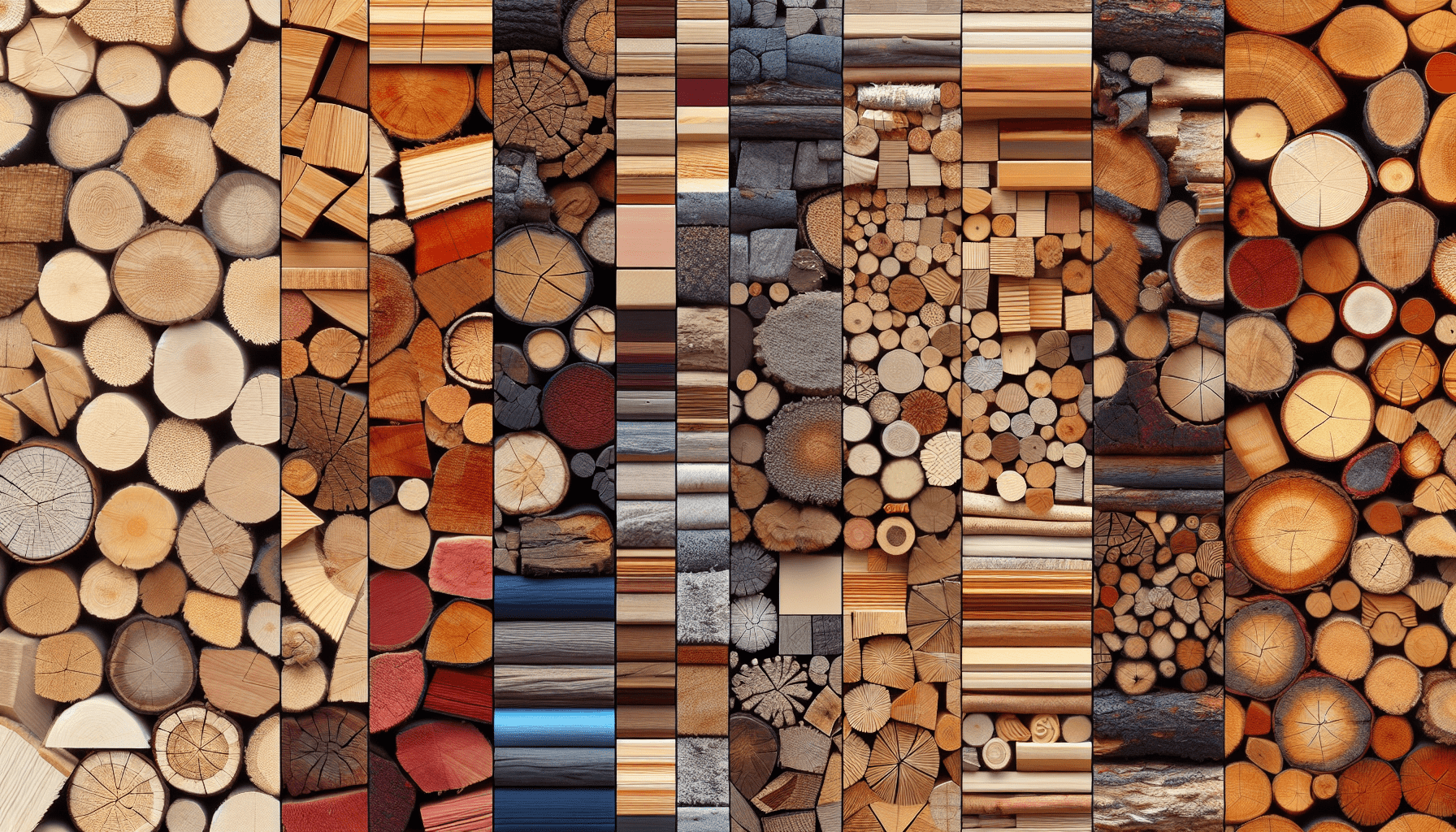What Wood Shouldn’t You Burn?
Ever wondered what wood shouldn’t you burn? I know that lighting a fire can be one of life’s small pleasures, especially on a cold, blustery day. The crackling sound, the dancing flames, and that comforting warmth create an instant cozy vibe. But not all wood is created equal when it comes to burning. Some woods are great for fires, while others should be avoided like the plague. Let’s journey through the proverbial forest and figure out which woods you should keep out of your fireplace or fire pit.

The Basics of Wood Burning
Before we dive in, let’s cover some basics. Not all wood burns the same. Hardwoods like oak and maple burn longer and produce more heat, while softwoods like pine and spruce ignite quickly but burn out faster. Moisture content is another critical factor. Green or unseasoned wood, which has been recently cut and still retains moisture, smokes excessively and produces less heat compared to seasoned wood.
Hardwoods vs. Softwoods
| Type | Characteristics | Examples |
|---|---|---|
| Hardwoods | Dense, long-burning, hotter flame | Oak, Maple, Birch |
| Softwoods | Less dense, quick-burning, more soot and creosote production | Pine, Spruce, Fir |
Understanding these distinctions will help you grasp why certain woods make better firewood than others. You don’t want to deal with excessive smoke, rapid flameouts, or worse, hazardous chemicals.
Pressure-Treated Wood
You’ve probably seen pressure-treated wood used in everything from decking to playgrounds. This type of wood has been infused with chemicals to make it resistant to rot, insects, and microbial decay. Sounds great for construction but terrible for a fire.
Why Avoid It?
Burning pressure-treated wood releases toxic chemicals, including arsenic and chromium, into the air. These chemicals are harmful to breathe in and can be particularly dangerous if you have respiratory issues.
Health Risks
Inhaling the smoke from pressure-treated wood can cause a range of health problems, including:
- Respiratory irritation
- Headaches
- Dizziness
- Long-term exposure could even lead to more serious conditions like cancer
The risk isn’t worth the cozy ambiance, trust me.
Painted or Stained Wood
You might have some old wooden furniture or remnants from a renovation project lying around. Before you toss them into the fire, stop and think for a moment.
Why Avoid It?
Just like pressure-treated wood, painted or stained wood can release harmful chemicals when burned. These could include lead from older paints and other toxic substances found in stains and varnishes.
Health Risks
Burning painted or stained wood can lead to:
- Respiratory problems
- Release of toxic fumes
- Potentially harmful runoff if ashes are disposed of improperly
Again, probably not the best idea to risk your health for a few moments of fiery bliss.
Plywood and Particleboard
Ever tried burning plywood or particleboard? If you did, you probably noticed it didn’t burn quite the same as natural wood. That’s because these materials are engineered products.
Why Avoid It?
Plywood and particleboard are made with adhesives and other chemicals that can release harmful toxins when burned. These materials also tend to produce heavier, denser smoke that can be quite overwhelming.
Health Risks
The toxins released from burning plywood or particleboard can lead to:
- Respiratory irritation
- Headaches
- Potential long-term health effects
It’s better to use these materials for their intended purposes and stick to natural wood for your fires.

Driftwood
If you’re lucky enough to live near a beach, driftwood might seem like a convenient and rustic firewood option. However, this is another temptation you should avoid.
Why Avoid It?
Driftwood usually has a high salt content, which can cause it to release toxic chlorine gas when burned. This not only damages your fireplace or stove but also poses serious health risks.
Health Risks
The chemicals released from burning driftwood can cause:
- Respiratory problems
- Eye irritation
- Potentially toxic exposure to heavy metals absorbed by the wood over time
Save the driftwood for decorative purposes; it’s much safer that way.
Green Wood
Let’s talk about green wood or freshly cut, unseasoned wood. It’s tempting to use it because it’s readily available, especially if you’ve just done some tree pruning. But hold on a second!
Why Avoid It?
Green wood has a high moisture content, which makes it difficult to burn efficiently. It produces a lot of smoke and creosote, a tar-like substance that can build up in your chimney and cause a fire hazard.
Health Risks
Burning green wood can cause:
- Reduced air quality around your home
- Excessive smoke that can irritate eyes and lungs
To avoid these issues, always use well-seasoned wood.
Poisonous Wood
Yes, some woods are actually poisonous when burned. These are usually types of wood that contain natural toxins, harmful oils, or saps. A good example is Oleander.
Why Avoid It?
Burning poisonous wood releases these toxins into the air, causing a host of health problems. Even the smoke from these woods can be harmful to you and anyone around you.
Health Risks
Toxic woods can trigger:
- Severe respiratory issues
- Potential skin irritation
- Possible poisoning if inhaled in large quantities
It’s essential to identify these woods and avoid them at all costs.
Exotic Wood
Woods like teak, mahogany, and rosewood are often used in fine furniture and high-end woodwork. They’re beautiful and durable, but should you burn them? Short answer: No.
Why Avoid It?
Exotic woods often contain high levels of natural oils and resins that can produce thick, noxious smoke. They are also typically more expensive, making them better suited for woodworking than for burning.
Health Risks
Burning exotic woods can result in:
- Airway irritation
- Dense smoke that aggravates respiratory conditions
Stick to using exotic woods for their intended high-end purposes instead of burning them.
Moldy or Rotten Wood
You might have a pile of wood that’s been sitting out in the rain, maybe developing some mold or rot. Should you toss it in the fire to get rid of it? Definitely not.
Why Avoid It?
Moldy or rotten wood doesn’t burn well and releases musty, unpleasant odors. Worse, the mold spores and bacteria can become airborne when the wood is burned, creating a health hazard.
Health Risks
Burning moldy or rotten wood can lead to:
- Respiratory issues from mold spores
- Increased indoor air pollution
- Unpleasant odors that are hard to get rid of
It’s best to dispose of moldy or rotten wood properly rather than burning it.
Where to Find Safe Firewood
You’re probably wondering at this point, “What wood can I burn?” Thankfully, there are plenty of safe options out there.
Seasoned Hardwood
Ideal woods for burning include oak, maple, and beech. They burn hot and long with minimal smoke, providing efficient heat.
Local Suppliers
Buying from local firewood suppliers ensures you get well-seasoned, high-quality wood. Always ask about the type of wood and its moisture content.
Self-Chopped
If you chop your own wood, make sure to season it properly. Stack it in a dry place for at least six months to reduce moisture content.
Proper Wood Storage
Once you’ve got your wood, you need to store it properly to keep it burn-ready.
Location
Store your wood in a dry, well-ventilated area, preferably off the ground to avoid moisture absorption from the soil.
Cover
Cover the top of your woodpile with a tarp but leave the sides open for air circulation. This helps in drying out the wood while protecting it from rain or snow.
Seasoning Time
Ensure your wood is seasoned for at least six months. Check the wood regularly to ensure it’s drying properly.
Conclusion
Burning the right kind of wood is crucial for your health, safety, and the longevity of your fireplace or stove. Avoiding pressure-treated, painted, or stained wood, as well as plywood, driftwood, green wood, poisonous, exotic, and moldy or rotten wood can make a significant difference. Stick to seasoned hardwoods like oak, maple, and beech, and always ensure proper storage and seasoning of your firewood.
So next time you’re about to light up, take a moment to consider, “What wood shouldn’t you burn?” The answer can save you a lot of trouble, ensuring that your cozy fireside moments are as safe and enjoyable as they can be.

